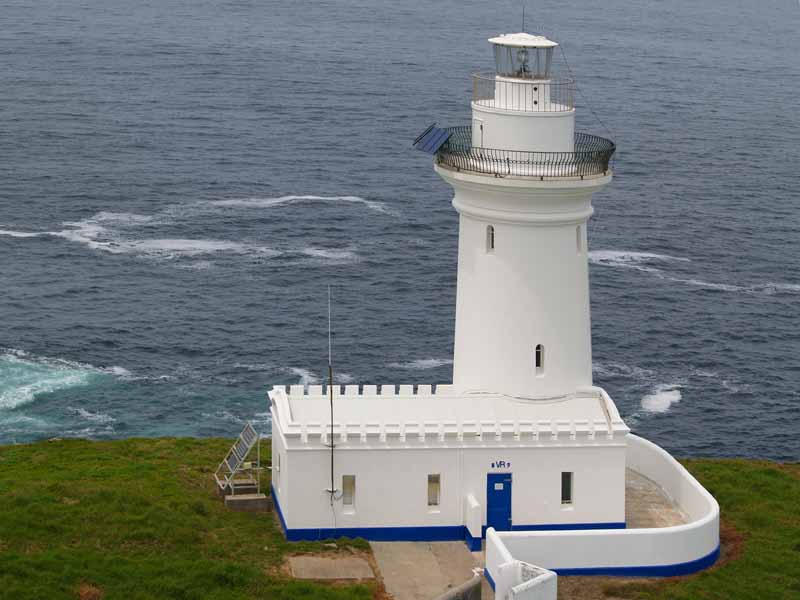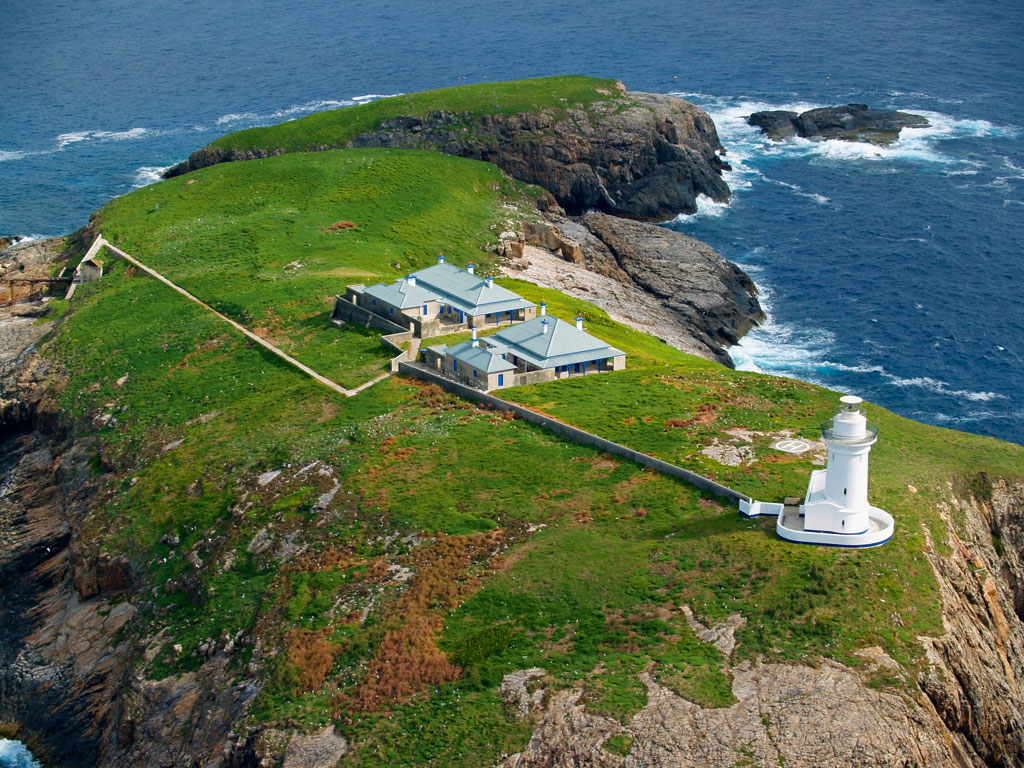South Solitary Island
Lighthouse keepers and their families were used to living in remote locations, but even they regarded South Solitary Island as the most isolated place in NSW. South Solitary was hard to get to. Lying 18 km north-east of Coffs Harbour, and rising dramatically from the steep rocky landscape, the lighthouse was linked to a high jetty. When seas were calm, food and supplies were delivered using the jetty and basket lifts.
The lighthouse and its cottages were built of concrete in 1880. Although the island cannot be visited, the lighthouse can be viewed by boat cruises from Coffs Harbour.
South Solitary Lighthouse was designed by James Barnet. The lighthouse went to tender in 28 June 1878 and John McLeod and his partner Hugh MacMaster, were the successful tenders. The first group of workmen arrived on the island on 11 July 1878 and this is the first known habitation of the island. “Barnet had expected the lighthouse to be in commission in 1879 and the monogrammed date 18VR79 which appears on the lighthouse entrance and also on the keeper’s quarters, was included in Barnet’s elevation plan of January 1878. The light in fact did not operate until 18 March 1880.” (JRC Planning Services, 1996:p26).
The tower was built of mass concrete using cement and sand conveyed to the island and 'broken stone from the conglomerate rock of the island.' Three large stone cottages were erected for the keepers and due to the extreme weather conditions are surrounded by high stone walls. A wall also runs from the cottages to the lighthouse.
The South Solitary Lighthouse appears to be the first in New South Wales to use kerosene instead of colza oil. The mechanism was so satisfactory that it was not converted to automatic electric until 1975 when it was demanned. Therefore the South Solitary Lighthouse was also the last kerosene operated light it New South Wales. The original optic was replaced in 1975 and the 1880 optic can still be seen in the Coffs Harbour and District Historical Museum.

In the early days supplies arrived by steamer from Sydney every fortnight and eventually weekly or fortnightly supplies were launched from Coffs Harbour, weather permitting. Due to the steep slope of the island, everything including supplies and people had to be taken off the launch in a basket lowered by a crane from the landing stage. The drums of kerosene had to be unloaded and then hauled up the steep concrete path as with the other stores.
There is a little school house, a room, near the head-keeper's residence on the island. In 1909 the keepers hired a school-teacher William Mahon and arranged for a government subsidy for the year that Mahon remained on the island. In the early days a governess was engaged by many of the keepers. Children of school age later received their education through correspondence.



































